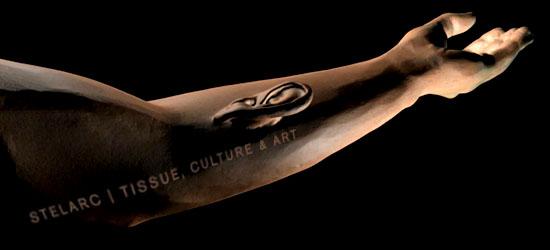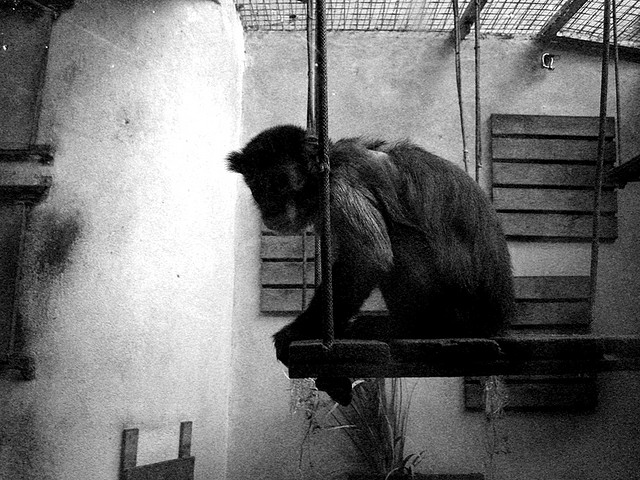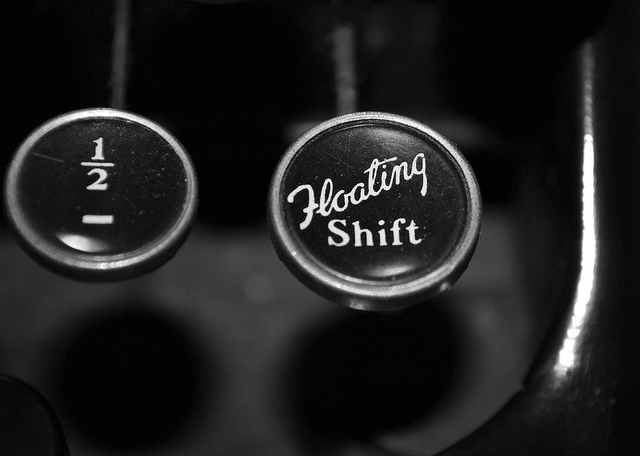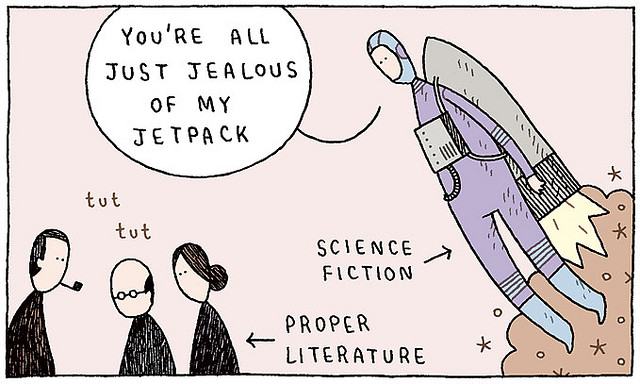
ENG502 Modern Literary Theory: Objects, Actants, Networks
Spring 2011
Prof. Eileen Joy
WORKING BIBLIOGRAPHY

BR = Book on Reserve @Lovejoy Circulation Desk; ECR = Electronic Course Reserve
I. Object- and Network-Oriented Studies [including a few works in ecology studies]
A. Books, Articles, Talks:
AHMED, Sara. Queer Phenomenology: Orientations, Objects, Others. Duke University Press, 2006. [BR]
“Orientations Toward Objects,” pp. 25-63. [ECR]
ALAIMO, Stacy. Bodily Natures: Science, Environment, and the Material Self. Indiana University Press, 2010.
ALAIMO, Stacy, and Susan HEKMAN, eds. Material Feminisms. Indiana University Press, 2008.
BARABASI, Albert-Laszlo. Linked: How Everything is Connected to Everything Else and What It Means. Plume, 2003.
BARAD, Karen. Meeting the Universe Halfway: Quantum Physics and the Entanglement of Matter and Meaning. Duke University Press, 2007.
Recommended Chapters:
“Introduction: The Science and Ethics of Mattering,” pp. 3-38.
“Meeting the Universe Halfway,” pp. 39-70.
“Diffractions: Differences, Contingencies, and Entanglements that Matter,” pp. 71-96.
BARAD, Karen. “Posthumanist Peformativity: Toward an Understanding of How Matter Comes to Matter.” Signs: Journal of Women in Culture and Society 28.3 (2003): 801-831.
BENNETT, Jane. Thoreau's Nature: Ethics, Politics, and the Wild. Rowman and Littlefield, 2001.
BENNETT, Jane. Vibrant Matter: A Political Ecology of Things. Duke University Press, 2010.
BENNETT, Jane. "Walt Whitman's Solar Judgment." Lecture: Birbeck Institute for the Humanities, University of London. 17 May 2010: http://backdoorbroadcasting.net/2010/05/jane-bennett-walt-whitmans-solar-judgment/.
BLACKWELL, Mark, ed. The Secret Life of Things: Animals, Objects, and It-Narratives in Eighteenth-Century England. Bucknell University Press, 2007.
BOGOST, Ian. Alien Phenomenology, or, What It's Like to be a Thing. University of Minnesota Press, 2012.
BOGOST, Ian. "The New Aesthetic Needs to Get Weirder." The Atlantic Mobile. 13 April 2012: http://m.theatlantic.com/technology/archive/2012/04/the-new-aesthetic-needs-to-get-weirder/255838/
BOGOST, Ian. Unit Operations: An Approach to Videogame Criticism. MIT Press, 2008.
BOLLAS, Christopher. The Evocative Object World. Taylor & Francis, 2008.
BOLLAS, Christoper. The Mystery of Things. Routledge, 1999.
BOLLAS, Christopher. The Shadow of the Object: Psychoanalysis and Unknown Thought. Columbia University Press, 1989.
BRASSIER, Ray, Ian Hamilton GRANT, Graham HARMAN, and Quentin MEILLASSOUX. “Speculative Realism.” [proceedings of 1-day workshop held at Goldsmiths College, University of London, 27 April 2007] In COLLAPSE, Vol. III, pp. 307-449. Urbanomic, 2007.
*This is a free, open-access volume, the .pdf file of which is available HERE.
BROWN, Bill. “Objects, Others, and Us (the Refabrication of Things).” Critical Inquiry 36.2 (2010): 183-217. [ECR]
BROWN, Bill. A Sense of Things: The Object Matter of American Literature. University of Chicago Press, 2003.
BROWN, Bill. “Thing Theory.” Critical Inquiry 28.1 (2001): 1-22. [ECR]
BRYANT, Levi. The Democracy of Objects. Open Humanities Press, 2011.
BRYANT, Levi. "A Lexicon of Onticology." Larval Subjects 22 May 2010: http://larvalsubjects.wordpress.com/2010/05/22/a-lexicon-of-onticology/.
COHEN, Jeffrey Jerome, ed. Animal, Vegetable, Mineral: Ethics and Objects. punctum books, 2012.
COHEN, Jeffrey Jerome. “The Sex Life of Stone.” Forthcoming in Stones, Worms, and Skin: Gender and Embodiment in Medieval Europe, ed. Peggy McCracken and Jane Burns. Notre Dame University Press, 2012. [ECR]
CONNOR, Steven. "Thinking Things." [plenary lecture] 9th Annual Conference of the European Society for the Study of English, Aarhus, Denmark, 25 Aug. 2008: http://www.bbk.ac.uk/english/skc/thinkingthings/.
CONNOLLY, William E. “The Fragility of Things.” The Contemporary Condition [weblog], 16 Aug. 2010: http://contemporarycondition.blogspot.com/2010/08/fragility-of-things.html.
COOLE, Diana and Samantha Frost, eds. New Materialisms: Ontology, Agency, Politics. Duke University Press, 2010.
FERRY, Luc. The New Ecological Order, trans. Carol Volk. Chicago University Press, 1995.
FROW, John. “A Pebble, A Camera, A Man Who Turns Into a Telegraph Pole.” Critical Inquiry 28.1 (2001): 270-285.
HARMAN, Graham. “Asymmetrical Causation.” Parallax 16.1 (2010): 96-109. [ECR]
GAARTD, Greta. “Toward a Queer Ecofeminism.” Hypatia 12.1 (1997): 114-137.
GOODBODY, Axel and Kate RIGBY, eds. Ecocritical Theory: New European Approaches. University of Virginia Press, 2011.
HACHE, Émilie and Bruno Latour. Trans. Patrick Camiller. “Morality or Moralism? An Exercise in Sensitization.” Common Knowledge 16.2 (2010): 311-330.
HARMAN, Graham. Circus Philosophicus. Zero Books, 2010.
HARMAN, Graham. Guerilla Metaphysics: Phenomenology and the Carpentry of Things. Open Court Press, 2005.
Recommended Chapters:
“Objects,” pp. 73-88.
“The Problem of Objects,” pp. 89-100.
“Vicarious Causation,” pp. 169-234.
“Some Implications,” pp. 235-256.
HARMAN, Graham. “A History of Speculative Realism and Object-Oriented Ontology” [recorded talk]. Conference: “Hello, Everything: Speculative Realism and Object-Oriented Ontology,” UCLA, 1 Dec. 2010: http://ecologywithoutnature.blogspot.com/2010/12/graham-harmans-talk-on-ooo-and-sr-at.html.
HARMAN, Graham. “On Vicarious Causation.” In Robin Mackay, ed., COLLAPSE, Vol. II: Speculative Realism, 171-205. Urbanomic, 2007.
HARMAN, Graham. Prince of Networks: Bruno Latour and Metaphysics. re.press, 2009.
*This is a free, open-access book, the full .pdf file of which is available HERE.
Recommended Chapters:
“The Metaphysics of Latour," pp. 11-95.
“Object-Oriented Philosophy,” pp. 151-228.
HARMAN, Graham. The Quadruple Object. Zero Books, 2011.
HARMAN, Graham. “Time, Space, Essence, and Eidos: A New Theory of Causation.” Cosmos and History: The Journal of Natural and Social Philosophy 6.1 (2010): 1-17 [http://cosmosandhistory.org/index.php/journal/issue/current].
HARMAN, Graham. Toward Speculative Realism: Essays and Lectures. Zero Books, 2010.
Recommended Chapters:
“Object-Oriented Philosophy (1999),” pp. 93-105.
“Space, Time, and Essence: An Object-Oriented Approach (2008),” pp. 140-169.
"The Assemblage Theory of Society (2008)," pp. 170-198.
“Objects, Matter, Sleep, and Death (2009),” pp. 199-207.
Hives, Tribes, Assemblages: New Collectivities. [special journal issue] Rhizomes 21 (Winter 2010): http://www.rhizomes.net/issue21/index.html.
JOHNSON, Barbara. Persons and Things. Harvard University Press, 2008. [BR]
“The Thingliness of Persons,” pp. 47-105. [ECR]
JOHNSON, Steven. Emergence: The Connected Lives of Ants, Brains, Cities, and Software. Scribner, 2001. [BR]
“Introduction: Here Comes Everybody!” pp. 18. [ECR]
“The Myth of the Ant Queen,” pp. 29-72. [ECR]
KELLY, Kevin. What Technology Wants. Viking, 2010.
LATOUR, Bruno. Reassembling the Social: An Introduction to Actor-Network Theory. Oxford University Press, 2005. [BR]
“First Source of Uncertainty: No Group, Only Group Formation,” pp. 27-42. [ECR]
“Second Source of Uncertainty: Action is Overtaken,” pp. 43-62. [ECR]
“Third Source of Uncertainty: Objects too Have Agency,” pp. 63-86. [ECR]
LATOUR, Bruno. Science in Action: How to Follow Scientists and Engineers Through Society. Harvard University Press, 1987.
LUCRETIUS. On the Nature of Things. Trans. M.F. Smith. Rev. ed. Loeb Classical Library, 1924.
MATTHEWS, Freya. For Love of Matter: A Contemporary Panpsychism. State University of New York Press, 2003.
MENTZ, Steve. At the Bottom of Shakespeare's Ocean. Continuum Books, 2009.
MESKELL, Lynn, ed. Archaeologies of Materiality. Blackwell, 2005.
MORTIMER-SANDILANDS, Catriona and Bruce ERIKSON, eds. Queer Ecologies: Sex, Nature, Politics. Indiana University Press, 2010.
MORTON, Timothy. The Ecological Thought. Harvard University Press, 2010. [BR]
“Thinking Big,” pp. 20-58. [ECR]
MORTON, Timothy. Ecology Without Nature: Rethinking Environmental Aesthetics. Harvard University Press, 2009.
MORTON, Timothy. "Hyperobjects and the End of Common Sense." The Contemporary Condition 18 Mar. 2010: http://contemporarycondition.blogspot.com/2010/03/hyperobjects-and-end-of-common-sense.html.
MORTON, Timothy. "Queer Ecology." PMLA 125.2 (2010): 273-282.
MORTON, Timothy. "Unprimed: The Emergence of Hyperobjects," Parts 1, 2, 3, 4 & 5. [presentation] Symposium: "The Unprimed Canvas," Architectural Association, London, 4 Feb. 2011.
Oceanic Studies. [special essay cluster] PMLA 125.3 (2010): 657-736.
PERNIOLA, Mario. Sex Appeal of the Inorganic: Philosophies of Desire in the Modern World. Trans. Massimo Verdicchio. Continuum Books, 2004.
PHILLIPS, Dana. The Truth of Ecology: Nature, Culture, and Literature in America. Oxford University Press, 2003.
POLLAN, Michael. The Botany of Desire: A Plant's-Eye View of the World. Random House, 2001.
Queer Nature. [special issue] Undercurrents 6 (1994): 1-44.
RIGBY, Kate. "Earth, World, Text: On the (Im)possibility of Ecopoeisis." New Literary History 35.3 (2004): 427-442.
ROBERSTON, George et alia. FutureNatural: Nature/Science/Culture. Routledge, 1996.
Recommended Chapters:
Kate Soper, “Nature/'nature',” pp. 21-34.
Evelyn Fox Keller, “The Biological Gaze,” pp. 107-120.
N. Katherine Hayles, “Narratives of Artificial Life,“ pp. 147-164.
ROBERTSON, Kellie. “Medieval Materialism: A Manifesto.” Exemplaria 22.2 (2010): 99-118. [ECR]
RHEINGOLD, Howard. Smart Mobs: The Next Social Revolution. Basic Books, 2002.
SHAVIRO, Steven. Connected, or, What It Means to Live in a Networked Society. University of Minnesota Press, 2003.
TIFFANY, Daniel. Toy Medium: Materialism and Modern Lyric. University of California Press, 2000.
TILLEY, Christopher. The Materiality of Stone: Explorations in Landscape Phenomenology. Berg, 2004.
TURKLE, Sherry, ed. Evocative Objects: Things We Think With. M.I.T. Press, 2008.
VITALE, Christopher. “Networkologies: A Manifesto (Version 1.0).” Networkologies 2009: http://networkologies.wordpress.com/why-networks-a-mini-manifesto/.
YATES, Julian. “The Briefcase of Walter Benjamin/Benjamin Walter's Briefcase: An Invent/Story.” Rhizomes: Cultural Studies in Emerging Knowledge 20 (2010): http://www.rhizomes.net/issue20/yates/index.html.
YATES, Julian. Error, Misuse, Failure: Object Lessons from the English Renaissance. University of Minnesota Press, 2003.
YATES, Julian. “Towards a Theory of Agentive Drift, or, A Particular Fondness for Oranges.” Parallax 8.1 (January 2002): 47-58. [ECR]
B. Speculative Realism/Object-Oriented Philosophy/Eco- & Geo-Philosophy Weblogs:
Algorithim and Contingency (Robert Jackson)
Another Heidegger Blog (Paul J. Ennis)
Dark Chemistry: Nature, Technology, and Culture at the Crossroads of Speculative Realism (S.C. Hickman)
Ecology Without Nature (Timothy Morton)
Eliminative Culinarism (Reza Negarestani)
Ian Bogost: Videogame Theory, Criticism, Design
Immanence (Adrian J. Ivakhiv)
Larval Subjects (Levi R. Bryant)
Naught Thought (Ben Woodard)
Networkologies (Christopher Vitale)
Object-Oriented Philosophy (Graham Harman)
Speculative Heresy (Ben Woodard, Nick Srnicek, Taylor Adkins)

II. Post- and Techno-Human Studies [including texts on science, body, and embodiment studies]
AHMED, Sara and Jackie Stacey, eds. Thinking Through the Skin. Routledge, 2001.
BADMINGTON, Neil, ed. Posthumanism. Palgrave, 2000.
BADMINGTON, Neil. “Theorizing Posthumanism.” Cultural Critique 53 (2003): 10-27.
BARRON, Colin. “A Strong Distinction Between Humans and Non-humans Is No Longer Required For Research Purposes: A Debate Between Bruno Latour and Steve Fuller.” History of the Human Sciences 16.2 (2003): 77-99.
BOSTROM, Nick. “Why I Want to Be Posthuman When I Grow Up.” In Medical Enhancement and Posthumanity, ed. Bert Gordijn and Ruth Chadwick. Springer Science, 2008.
Nick Bostrom Home Page. Future of Humanity Institute, Oxford University: http://www.nickbostrom.com/.
BRAIDOTTI, Rosi. Metamorphoses: Towards a Materialist Theory of Becoming. Polity Press, 2002. [BR]
“Meta(l)morphoses: the Becoming-Machine,” pp. 212-263. [ECR]
BRAIDOTTI, ROSI. “Posthuman, All Too Human: Towards a New Process Ontology.” Theory, Culture & Society 23.7-8 (2006): 197-208. [ECR]
BREAZEAL, Cynthia L. Designing Sociable Robots. M.I.T. Press, 2002.
BROOKS, Rodney. Flesh and Machines: How Robots Will Change Us. Vintage Books, 2003.
CHAKRAVORTY, Mrinalini and Leila Neti. “The Human Recycled: Insecurity in the Transnational Moment.” differences: a journal of feminist cultural studies 20.2-3 (2009): 194-223. [ECR]
CLARK, Andy. Natural-Born Cyborgs: Minds, Technologies, and the Future of Human Intelligence. Oxford University Press, 2003. [BR]
“What Are We?” pp. 115-142. [ECR]
“Global Swarming,” pp. 143-165. [ECR]
CLARK, Andy. Supersizing the Mind: Embodiment, Action, and Cognitive Extension. Oxford University Press, 2008.
COHEN, Jeffrey Jerome. Hybridity, Identity, and Monstrosity in Medieval Britain: On Difficult Middles. Palgrave Macmillan, 2006.
COHEN, Jeffrey Jerome. Medieval Identity Machines. University of Minnesota Press, 2003.
Recommended Chapter:
“Chevalrie,” pp. 35-77.
COONEY, Brian. Posthumanity: Thinking Philosophically About the Future. Rowman and Littlefield, 2004.
CRONON, William, ed. Uncommon Ground: Rethinking the Human Place in Nature. W.W. Norton, 1995.
CSORDAS, Thomas J. Embodiment and Experience: The Existential Ground of Culture and Self. Cambridge Studies in Medical Anthropology. Cambridge University Press, 1995.
DASTON, Lorraine and Katharine Park. Wonders and the Order of Nature, 1150-1750. Zone Books, 2001.
DAVIS, Lennard, ed. The Disability Studies Reader. Routledge, 2006.
FEHER, Michel, ed. Fragments For a History of the Human Body (Zone 3, 4 & 5). Parts 1-3. Zone Books, 1989.
FUSS, Diana, ed. Human, All Too Human. Routledge, 1996.
GALLAGHER, Catherine and Thomas LAQUEUR, eds. The Making of the Modern Body: Sexuality and Society in the Nineteenth Century. University of California Press, 1987.
GIFFNEY, Noreen and Myra J. HIRD, eds. Queering the Non/Human. Ashgate Publishing, 2008. [BR]
Karen Barad, “Queer Causation and the Ethics of Mattering,” pp. 311-338. [ECR]
GLIMP, David. “Moral Philosophy for Cyborgs.” postmedieval: a journal of medieval cultural studies 1.1/2 (2010): 72-79. [ECR]
GRAHAM, Elaine. Representations of the Post/human: Monsters, Aliens and Others in Popular Culture. Manchester University Press, 2002. [BR]
“Much Ado About Data,” pp. 132-153. [ECR]
HALBERSTAM, Judith and Ira Livingston, eds. Posthuman Bodies. Indiana University Press, 1995.
HARAWAY, Donna. Modest_Witness@Second Millennium_Millennium: Female_Man©_Meets_OncomouseTM. Routledge, 1997.
HARAWAY, Donna. Simians, Cyborgs and Women: The Reinvention of Nature. Routledge, 1991. [BR]
“A Cyborg Manifesto: Science, Technology, and Socialist-Feminism in the Late Twentieth Century,” pp. 149-181. [ECR]
HAYLES, N. Katherine. “Flesh and Metal: Reconfiguring the Mindbody in Virtual Environments.” Configurations 10 (2002): 297-320. [ECR]
HAYLES, N. Katherine. How We Became Posthuman: Virtual Bodies in Cybernetics, Literature, and Informatics. University of Chicago Press, 1999. [BR]
“Toward Embodied Virtuality,” pp. 1-24. [ECR]
“Turning Reality Inside Out and Right Side Out: Boundary Work in the Mid-Sixties Novels of Philip K. Dick,” pp. 160-191. [ECR]
HAYLES, N. Katherine. My Mother Was a Computer: Digital Subjects and Literary Texts. University of Chicago Press, 2005.
HIRD, Myra J. Sex, Gender, and Science. Palgrave, 2004.
HOFSTADTER, Douglas R. I am a Strange Loop. Basic Books, 2007. [BR]
“How We Live in Each Other,” pp. 241-258. [ECR]
“The Blurry Glow of Human Identity,” pp. 259-275. [ECR]
HOOFD, Ingrid. cyborg manifesto 2.0.: discussions in feminist figurations, new technologies, and social change. http://www.cyberartsweb.org/cpace/theory/hoofd/index.html.
Identity. [special issue] The Hedgehog Review 1.1 (1999): http://www.iasc-culture.org/publications_hedgehog_1999-Fall.php.
JOY, Eileen and Christine NEUFELD. “A Confession of Faith: Notes Toward a New Humanism.” Journal of Narrative Theory 37.2 (2007): 161-190. [ECR]
JOY, Eileen and Craig DIONNE, eds. When Did We Become Post/human? [special journal issue] postmedieval: a journal of medieval cultural studies 1.1/2 (2010): 1-289.
SHAW, David Gary. “Embodiment and the Human from Dante through Tomorrow,” pp. 165-172. [ECR]
WITMORE, Michael. “We Have Never Not Been Inhuman,” pp. 208-214.
YATES, Julian. “It’s (for) You; or, the Tele-t/r/opical Post-human,”pp. 223-234. [ECR]
KIRBY, Vicki. Telling Flesh: The Substance of the Corporeal. Routledge, 1997.
KURZWEIL, Ray. The Singularity is Near: When Humans Transcend Biology. Viking Penguin, 2005.
MARGULIS, Lynn and Dorion SAGAN. What is Life? University of California Press, 1995.
MACKENZIE, Adrian. Transductions: Bodies and Machines at Speed. Continuum Books, 2002.
McRUER, Robert. Crip Theory: Cultural Signs of Queerness and Disability. NYU Press, 2006.
MORAVEC, Hans. Mind Children: The Future of Robot and Human Intelligence. Harvard University Press, 1988.
MORAVEC, Hans. Robot: Mere Machine to Transcendent Mind. Oxford University Press, 1999.
PEPPERELL, Robert. The Posthuman Condition: Consciousness Beyond the Brain. Intellect Books, 2003.
PETTMAN, Dominic. Human Error: Species-Being and Media Machines. University of Minnesota Press, 2011.
PORTER, Roy. Flesh in the Age of Reason: The Modern Foundations of Body and Soul. W.W. Norton, 2004.
ROUGHGARDEN, Joan. Evolution’s Rainbow: Diversity, Gender, and Sexuality in Nature and People. University of California Press, 2004.
SAVULESCU, Julian and Nick BOSTROM, eds. Human Enhancement. Oxford University Press, 2009.
SEAMAN, Myra. “Becoming More (than) Human: Affective Posthumanisms, Past and Future.” Journal of Narrative Theory 37.2 (2007): 246-275. [ECR]
SCHEPER-HUGHES, Nancy and Loïc J. D. WACQUANT, eds. Commodifying Bodies. SAGE Publications, 2002.
SERRES, Michel. The Parasite. Trans. Lawrence R. Schehr. University of Minnesota Press, 2007.
SILVER, Lee. Remaking Eden: Cloning and Beyond in a Brave New World. Avon Books, 1994.
STOCK, Gregory. Redesigning Humans: Our Inevitable Genetic Future. Houghton Mifflin, 2002.
Technology and the Human Person. [special issue] The Hedgehog Review 4.3 (2002): http://www.iasc-culture.org/publications_hedgehog_2002-Fall.php.
THOMSON, Rosemarie Garland. Extraordinary Bodies: Figuring Physical Disability in American Culture and Literature. Columbia University Press, 2006.
WALBY, Cathy. The Visible Human Project: Informatic Bodies and Posthuman Medicine. Routledge, 2000.
WOLFE, Cary. What Is Posthumanism? University of Minnesota Press, 2010. [BR]
“From Dead Meat to Glow in the Dark Bunnies,” pp. 145-168. [ECR]

III. The Post-human Fine Arts
BARNEY, Matthew. The Cremaster Cycle. Cremaster.net: http://www.cremaster.net/#.
Matthew Barney: The Cremaster Cycle. Ed. Nancy SPECTOR and Neville WAKEFIELD. Guggenheim Museum Publications, 2002.
FERGUSON, Russell, Donna M. DE SALVO, and John SLYCE, eds. Gillian Wearing. Phaidon, 1999.
HARRIS, Jonathan and Sep KAMVAR. We Feel Fine: An Exploration of Human Emotion, In Six Movements. 2006.
JONES, Caroline A. Sensorium: Exmbodied Experience, Technology, and Contemporary Art. M.I.T. Press, 2006.
KAC, Eduardo. GFP Bunny. 2000.
KAC, Eduardo. Signs of Life: Bio Art and Beyond. M.I.T. Press, 2007.
KAC, Eduardo. Telepresence and Bio Art: Networking Humans, Rabbits & Robots. University of Michigan Press, 2005.
MOLON, Dominic and Barry SCHWABSKY, eds. Gillian Wearing: Mass Observation. Merrell, 2002.
ORLAN: Official Website. Orlan.net. http://www.orlan.net/.
STELARC. Stelarc: Images, Projects, Texts, Videos. http://web.stelarc.org/index2.html.
Stelarc: The Monograh. Ed. Marquard Smith. M.I.T. Press, 2007.
ZYLINSKA, Joanna, ed. The Cyborg Experiments: The Extensions of the Body in the Media Age. Continuum Books, 2002.

IV. Critical Animal Studies
ACAMPORA, Ralph R. Corporal Compassion: Animal Ethics and Philosophy of Body. University of Pittsburgh Press, 2006.
Recommended Chapter:
“Flesh-and-Blood Being-in-a-World: Toward a Transpecific Ontology of a Somatic Society,” pp. 25-47.
ADAMS, Carol J. The Sexual Politics of Meat: A Feminist-Vegetarian Critical Theory. Continuum Books, 1990.
The Animal--Part 1. [special issue] Mosaic 39.4 (2006): 1-213.
The Animal--Part 2. [special issue] Mosaic 40.1 (2007): 1-213.
Animal Beings, ed. Tom Tyler. [special issue] Parallax 38 (2006).
Animal Studies. [special essay cluster] PMLA 124.2 (2009): 361-369, 472-575.
ARISTOTLE. De motu animalium. Text with Translation, Commentary, and Interpretive Essays by Martha C. Nussbaum. Princeton University Press, 1978.
BAKER, Steve. The Postmodern Animal. Reaktion Books, 2001.
CALARCO, Matthew. Zoographies: The Question of the Animal from Heidegger to Derrida. Columbia University Press, 2008.
CALARCO, Matthew and Peter Atterton, eds. Animal Philosophy: Essential Readings in Continental Thought. Continuum Books, 2004.
CAVELL, Stanley, Cora DIAMOND, John McDOWELL, Ian HACKING, and Cary WOLFE. Philosophy and Animal Life. Columbia University Press, 2008.
CONNOR, Steven. Fly. Reaktion Books, 2006.
DASTON, Lorraine and Greg MITMAN, eds. Thinking with Animals: New Perspectives on Anthropomorphism. Columbia University Press, 2006.
Recommended Chapter:
Lorraine Daston, “Intelligences: Angelic, Animal, Human,” pp. 37-58.
DE WAAL, Frans B.M. Our Inner Ape: A Leading Primatologist Explains Why We Are Who We Are. Riverhead, 2005.
DERRIDA, Jacques. “That Animal That Therefore I Am (More to Follow).” Trans. David Wills. Critical Inquiry 28.2 (2002): 369-418. [ECR]
DERRIDA, Jacques. The Beast and the Sovereign. Vol. 1. Trans. Geoffrey Bennington. University of Chicago Press, 2009.
FRANKLIN, Sarah. Dolly Mixtures: The Remaking of Genealogy. Duke University Press, 2007.
FUDGE, Erica. Brutal Reasoning: Animals, Rationality, and Humanity in Early Modern Thought. Cornell University Press, 2006.
HAM, Jennifer and Matthew SENIOR, eds. Animal Acts: Configuring the Human in Western History. Routledge, 1997.
HARAWAY, Donna. The Companion Species Manifesto: Dogs, People, and Significant Otherness. Prickly Paradigm Press, 2003.
HARAWAY, Donna. When Species Meet. University of Minnesota Press, 2007.
MAZIS, Glen. Humans, Animals, Machines: Blurring Boundaries. State University of New York Press, 2008.
McHUGH, Susan. Animal Stories: Narrating Across Species Lines. University of Minnesota Press, 2011.
McHUGH, Susan. Dog. Reaktion Books, 2004.
McHUGH, Susan. “Narrating Companion Species.” [seminar] Center for Global Humanities, University of New England, 25 Jan. 2010: http://www.une.edu/cgh/video/archive.cfm?vid=31A9AC3E-D4D0-93B6-965D4CC90119BA8D.
NAGEL, Thomas. “What is it Like to be a Bat?” Philosophical Review 83.4 (1974): 435-450. [ECR]
RITVO, Harriet. The Animal Estate: The English and Other Creatures in the Victorian Age. Harvard University Press, 1987.
ROHFELS, Nigel, ed. Representing Animals. Indiana University Press, 2002.
SHUKIN, Nicole. Animal Capital: Rendering Life in Biopolitical Times. University of Minnesota Press, 2009.
SORABJI, Richard. Animal Minds and Human Morals: The Origins of the Western Debate. Cornell University Press, 1995.
STANESCU, James K. [aka Scu] Critical Animal [weblog]: http://criticalanimal.blogspot.com/.
STEEL, Karl. “How to Make a Human.” Exemplaria 20.1 (2008): 3-27. [ECR]
STEEL, Karl. How to Make a Human: Animals and Violence in the Middle Ages. Ohio State University Press, 2011.
TAYLOR, Angus. Animals and Ethics: An Overview of the Philosophical Debate. New ed. Broadview, 2003.
TYLER, Tom and Manuela ROSSINI, eds. Animal Encounters. Brill, 2009.
WOLCH, Jennifer and Jody EMEL, eds. Animal Geographies: Place, Politics, and Identity in the Nature-Culture Borderlands. Verso, 1998.
WOLFE, Cary. Animal Rites: American Culture, the Discourse of the Species, and Posthumanist Theory. University of Chicago Press, 2003.
WOLFE, Cary. “Human, All Too Human: ‘Animal Studies’ and the Humanities.” PMLA 124.2 (2009): 564-575. [ECR]
WOLFE, Cary, ed. Zoontologies: The Question of the Animal. University of Minnesota Press, 2003. [BR]
Recommended Chapter:
Jacques Derrida, “And Say the Animal Responded?” pp. 121-146.
YATES, Julian. “Counting Sheep: Dolly Does Utopia (again).” Rhizomes: Cultural Studies in Emerging Knowledge 8 (2004): http://www.rhizomes.net/issue8/yates2.htm.

V. Theory & Philosophy [theoretical & ethical & some scientific texts helpful to thinking through the human, the posthuman--including humanism and post-humanisms--the animal, and objects]
AGAMBEN, Giorgio. Home Sacer: Sovereign Power and Bare Life, trans. Daniel Heller-Roazen. Stanford University Press, 1995.
AGAMBEN, Giorgio. The Open: Man and Animal. Trans. Kevin Attell. Stanford University Press, 2004.
ATLAN, Henri. The Sparks of Randomness. Vol. 1: Spermatic Knowledge. Trans. Len J. Schramm. Stanford University Press, 2010.
BAUDRILLARD, Jean. Simulacra and Simulation. Trans. Sheila Faria Glaser. University of Michigan Press, 1994.
BECK, Ulrich. Risk Society: Towards a New Modernity. Trans. Mark Ritter. SAGE Publications, 1992.
BENNETT, Jane. The Enchantment of Modern Life: Attachments, Crossings, Ethics. Princeton University Press, 2001.
Recommended Chapters:
"Cross-Species Encounters," pp. 17-32.
"Complexity and Enchantment," pp. 91-110.
"Ethical Energetics," pp. 131-158.
BERSANI, Leo and Ulysse DUTOIT. Forms of Being: Cinema, Aesthetics, Subjectivity. British Film Institute, 2004. [BR]
“One Big Soul (The Thin Red Line),” pp. 124-178. [ECR]
BLACKMORE, Susan, ed. Conversations on Consciousness: What the Best Minds Think about the Brain, Free Will, and What It Means to Be Human. Oxford University Press, 2006.
BRAIDOTTI, Rosi. Transpositions: On Nomadic Ethics. Polity Press, 2006. [BR]
“Transits: Transposing the Subject,” pp. 144-203. [ECR]
BROCKMAN, John, ed. The New Humanists: Science at the Edge. Barnes and Noble, 2003.
BROCKMAN, John, ed. This Will Change Everything: Ideas That Will Shape the Future. HarperCollins, 2010.
BUTLER, Judith. Bodies That Matter: On the Discursive Limits of "Sex." Routledge, 1993.
BUTLER, Judith. Giving an Account of Oneself. Fordham University Press, 2005. [BR]
“Responsibility,” pp. 83-136. [ECR]
BUTLER, Judith. Precarious Life: The Powers of Mourning and Violence. Verso, 2004.
BYNUM, Caroline Walker. Metamorphosis and Identity. Zone Books, 2001.
Recommended Chapters:
“Metamorphisis, or, Gerald and the Werewolf,” pp. 77-112.
“Shape and Story,” pp. 163-190.
BYNUM, Caroline Walker. “Why All the Fuss About the Body? A Medievalist’s Perspective.” Critical Inquiry 22.1 (1995): 1-33. [ECR]
CAPUTO, John D. More Radical Hermeneutics: On Not Knowing Who We Are. Indiana University Press, 2000.
CARLSON, Thomas A. The Indiscrete Image: Infinitude and Creation of the Human. University of Chicago Press, 2008.
CHAMBERS, Iain. Culture After Humanism: History, Culture, Subjectivity. Routledge, 2001.
COHEN, Jeffrey J. and Todd RAMLOW. “Pink Vectors of Deleuze: Queer Theory and Inhumanism.” Rhizomes: Cultural Studies in Emerging Knowledge 11/12 (Fall 2005-Spring 2006): http://www.rhizomes.net/issue11/cohenramlow.html.
CRARY, Jonathan and Sanford KWINTER, eds. Incorporations (Zone 6). Zone Books, 1992.
DAWKINS, Richard. The Blind Watchmaker: Why the Evidence of Evolution Reveals a Universe Without Design. W.W. Norton, 1986.
DE LANDA, Manuel. A New Philosophy of Society: Assemblage Theory and Social Complexity. Continuum Books, 2006.
DE LANDA, Manuel. A Thousand Years of Nonlinear History. Swerve Editions, 1997.
Recommended Chapters:
“Introduction,” pp. 11-22.
“Biological History: 1000-1700 A.D.,” pp. 103-134.
“Conclusions and Speculations,” pp. 257-274.
DELEUZE, Gilles and Felix GUATTARI. Anti-Oedipus: Capitalism and Schizophrenia, trans. Robert Hurley, Mark Seem, and Helen R. Lane. University of Minnesota Press, 1983. [BR]
“The Desiring Machines,” pp. 1-50. [ECR]
DELEUZE, Gilles and Felix GUATTARI. A Thousand Plateaus: Capitalism and Schizophrenia, trans. Brian Massumi. University of Minnesota Press, 1987. [BR]
“1730: Becoming-Intense, Becoming-Animal, Becoming Imperceptible . . .,” pp. 232-309. [ECR]
DOYLE, Richard. Wetwares: Experiments in Postvital Living. University of Minnesota Press, 2003.
ETTINGER, Bracha. The Matrixial Borderspace. Ed. Brian Massumi. University of Minnesota Press, 2006.
ETTINGER, Bracha. “Matrixial Trans-subjectivity.” Theory, Culture & Society 23.2-3 (2006): 218-222. [ECR]
FOUCAULT, Michel. The Birth of Biopolitics: Lectures at the Collège de France, 1978-1979. Ed. Michel Senellart. Trans. Graham Burchell. Palgrave, 2008.
FOUCAULT, Michel. The History of Sexuality, Vol. 1: An Introduction. Trans. Robert Hurley. Vintage Books, 1980. [BR]
“Right of Death and Power over Life,” pp. 133-159. [ECR]
FOUCAULT, Michel. The Order of Things: An Archaeology of the Human Sciences. Routledge Classics, 2002.
Recommended Chapter:
“The Human Sciences,” pp. 375-422.
FUKUYAMA, Francis. Our Posthuman Future: Consequences of the Biotechnology Revolution. Picador Books, 2002.
GATENS, Moira. Imaginary Bodies: Ethics, Power, and Corporeality. Routledge, 1996.
GERGEN, Kenneth J. The Saturated Self: Dilemmas of Identity in Contemporary Life. Revised edition. Basic Books, 2000.
GRAY, John. Straw Dogs: Thoughts on Humans and Other Animals. Granta Books, 2002.
GROSZ, Elizabeth. The Nick of Time: Politics, Evolution, and the Untimely. Duke University Press, 2004.
GROSZ, Elizabeth. Time Travels: Feminism, Nature Power. Duke University Press, 2005.
Recommended Chapters:
“The Thing,” pp. 131-144.
“Prosthetic Objects,” pp. 145-152.
GROSZ, Elizabeth. Volatile Bodies: Toward a Corporeal Feminism. Indiana University Press, 1994.
Recommended Chapters:
“Nietzsche and the Choreography of Knowledge,” pp. 115-137.
“The Body as Inscriptive Surface,” pp. 138-159.
“Intensities and Flows,” pp. 160-186.
HABERMAS, Jürgen. The Future of Human Nature. Trans. William Rehg, Max Pensky, and Hella Beister. Polity Press, 2003.
HACKING, Ian. The Social Construction of What? Harvard University Press, 1999.
HALLIWELL, Martin and Andy MOUSLEY. Critical Humanisms: Humanist/Anti-Humanist Dialogues. Edinburgh University Press, 2003.
HEIDEGGER, Martin. The Question Concerning Technology and Other Essays. Trans. William Lovitt. Harper Torchbooks, 1977.
HEIDEGGER, Martin. What is a Thing? Trans. W.B. Barton Jr. and Vera Deutsch. Gateway, 1967.
LATOUR, Bruno. Aramis, or, The Love of Technology. Harvard University Press, 1996.
LATOUR, Bruno. Pandora’s Hope: Essays on the Reality of Science Studies. Harvard University Press, 1999.
MAY, Todd. Gilles Deleuze: An Introduction. Cambridge University Press, 2005.
NUSSBAUM, Martha. Frontiers of Justice: Disability, Nationality, Species Membership. The Tanner Lectures on Human Values. Belknap Press, 2006.
PEARSON, Keith Ansell. Viroid Life: Perspectives on Nietzsche and the Transhuman Condition. Routledge, 1997.
REYNOLDS, Bryan. Transversal Enterprises in the Drama of Shakespeare and His Contemporaries: Fugitive Explorations. Palgrave, 2006.
Recommended Chapter:
“Transversal Poetics and Fugitive Explorations: Theaterspace, Paused Consciousness, Subjunctivity, and Macbeth,” pp. 1-26.
SHEEHAN, Paul, ed. Becoming Human: New Perspectives on the Inhuman Condition. Praeger Publishers, 2003.
THACKER, Eugene. After Life. University of Chicago Press, 2010.
THACKER, Eugene. The Global Genome: Biotechnology, Politics, and Culture. M.I.T. Press, 2005.
TURKLE, Sherry. Alone Together: Why We Expect More from Technology and Less from Each Other. Basic Books, 2011.
WEINER, Norbert. Cybernetics: or Control and Communication in the Animal and the Machine. 2nd ed. M.I.T. Press, 1961.
WILSON, Timothy D. Strangers to Ourselves: Discovering the Adaptive Unconscious. Harvard University Press, 2009.
WINNER, Langdon. The Whale and the Reactor: The Search for Limits in an Age of High Technology. University of Chicago Press, 1986.
ZYLINSKA, Joanna. Bioethics in the Age of New Media. M.I.T. Press, 2009.
Recommended Chapters:
“Bioethics: A Critical Introduction,” pp. 3-34.
“A Different History of Bioethics: The Cybernetic Connection,” pp. 35-64.
“Green Bunnies and Speaking Ears: The Ethics of Bioart,” pp. 148-174.
World Question Center. Edge.org. http://www.edge.org. 1998-2010.

VI. Science Fiction & Cyborg/Cyberpunk Studies [including scholarship on J.G. Ballard, David Cronenberg, and Philip K. Dick]
BALSAMO, Ann Marie. Technologies of the Gendered Body: Reading Cyborg Women. Duke University Press, 1996.
BARDINI, Thierry. Junkware. University of Minnesota Press, 2010.
BAXTER, Jeannette. J.G. Ballard’s Surrealist Imagination. Ashgate, 2009.
BAXTER, Jeannette, ed. J.G. Ballard: Contemporary Critical Perspectives. Continuum Books, 2005.
BEARD, William. The Artist as Monster: The Cinema of David Cronenberg. University of Toronto Press, 2006.
BELL, David and Barbara M. KENNEDY, eds. The Cybercultures Reader. Routledge, 2000. [BR]
Recommended Chapters:
Forest Pyle, “Making Cyborgs, Making Humans: Of Terminators and Blade Runners,” pp. 124-137.
Alison Landsberg, “Prosthetic Memory: Total Recall and Blade Runner,” pp. 190-204.
BOOKER, M. Keith and Anne-Marie THOMAS. The Science Fiction Handbook. Wiley-Blackwell, 2009.
BROWNING, Mark. David Cronenberg: Author or Filmmaker? Intellect Books, 2007.
BUKATMAN, Scott. Terminal Identity: The Virtual Subject in Post-modern Science Fiction. Duke University Press, 1993.
CLARKE, Bruce. Posthuman Metamorphosis: Narrative and Systems. Fordham University Press, 2008.
Recommended Chapter:
“Communicating The Fly,” pp. 127-157.
David Cronenberg: Interviews with Serge Grünberg. Plexus, 2006.
DERY, Mark. Escape Velocity: Cyberculture at the End of the Century. Grove Press, 1996.
FEATHERSTONE, Mike and Roger BURROWS, eds. Cyberspace/Cyberbodies/ Cyberpunk: Cultures of Technological Embodiment. SAGE Publications, 1995.
GRAY, Chris Hables. Cyborg Citizen: Politics in a Posthuman Age. Routledge, 2001.
GRAY, Chris Hables, ed. The Cyborg Handbook. Routledge, 1995.
HEUSER, Sabine. Virtual Geographies: Cyberpunk at the Intersection of the Postmodern and Science Fiction. Rodopi, 2003.
JAMES, Edward and Farah Mendelsohn, eds. The Cambridge Companion to Science Fiction. Cambridge University Press, 2003.
JAMESON, Frederic. Archaeologies of the Future: The Desire Called Utopia and Other Science Fictions. Verso, 2005.
KERMAN, Judith B., ed. Retrofitting Blade Runner: Issues in Ridley Scott's Blade Runner and Philip K. Dick's Do Androids Dream of Electric Sheep? University of Wisconsin Press, 1997.
KITCHIN, Rob and James Kneale, eds. Lost in Space: Geographies of Science Fiction. Continuum Books, 2005.
KUCUKALIK, Lejla. Philip K. Dick: Canonical Writer of the Digital Age. Routledge, 2009.
KUHN, Annette, ed. Alien Zone: Cultural Theory and Contemporary Science Fiction Cinema. Verso, 1990.
LUCKHURST, Roger. The Angle Between Two Walls: The Fiction of J.G. Ballard. St. Martin’s Press, 1997.
McHALE, Brian. Postmodernist Fiction. Routledge, 1987.
MOYLAN, Tom and Raffaella BACCOLINI, eds. Dark Horizons: Science Fiction and the Dystopian Imagination. Routledge, 2003.
PALMER, Christopher. Philip K. Dick: Exhiliration and Terror of the Postmodern. Liverpool University Press, 2003.
ROBERTS, Adam. Science Fiction. 2nd ed. Routledge, 2006.
RODLEY, Chris, ed. Cronenberg on Cronenberg. Faber and Faber, 1997.
SANDERS, Steven M., ed. The Philosophy of Science Fiction Film. University Press of Kentucky, 2008.
SAYER, Karen and John MOORE, eds. Science Fiction: Critical Frontiers. Macmillan, 2000.
SCHNEIDER, Susan, ed. Science Fiction and Philosophy: From Time Travel to Superintelligence. Blackwell, 2009.
SPRINGER, Claudia. Electronic Eros: Bodies and Desire in the Postindustrial Age. University of Texas Press, 1996.
UMLAND, Samuel J., ed. Philip K. Dick: Contemporary Critical Interpretations. Greenwood Press, 1995.
VALE, V., ed. J.G. Ballard: Conversations. RE/Search, 2005.
VEST, Jason P. Future Imperfect: Philip K. Dick at the Movies. Greenwood, 2007.
VEST, Jason P. The Postmodern Humanism of Philip K. Dick. Scarecrow Press, 2009.
VINT, Sherryl. “Speciesism and Species Being in Do Androids Dream of Electric Sheep?” Mosaic 40.1 (2007): 111-126.
WARRICK, Patricia S. Mind in Motion: The Fiction of Philip K. Dick. Southern Illinois University Press, 1987.
WOLMARK, Jenny. Cybersexualities: A Reader on Feminist Theory, Cyborgs, and Cyberspace. Edinburgh University Press, 1999.